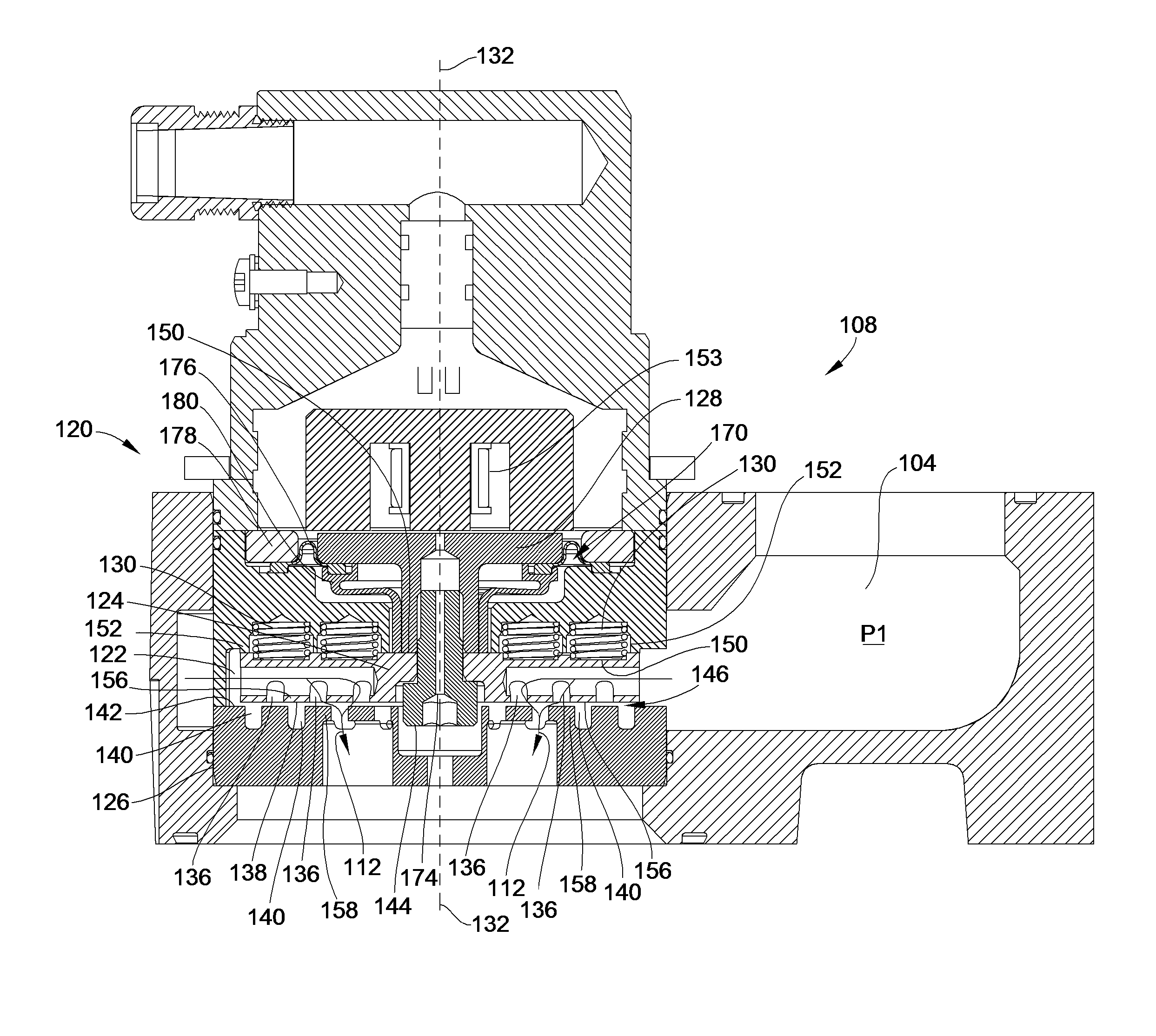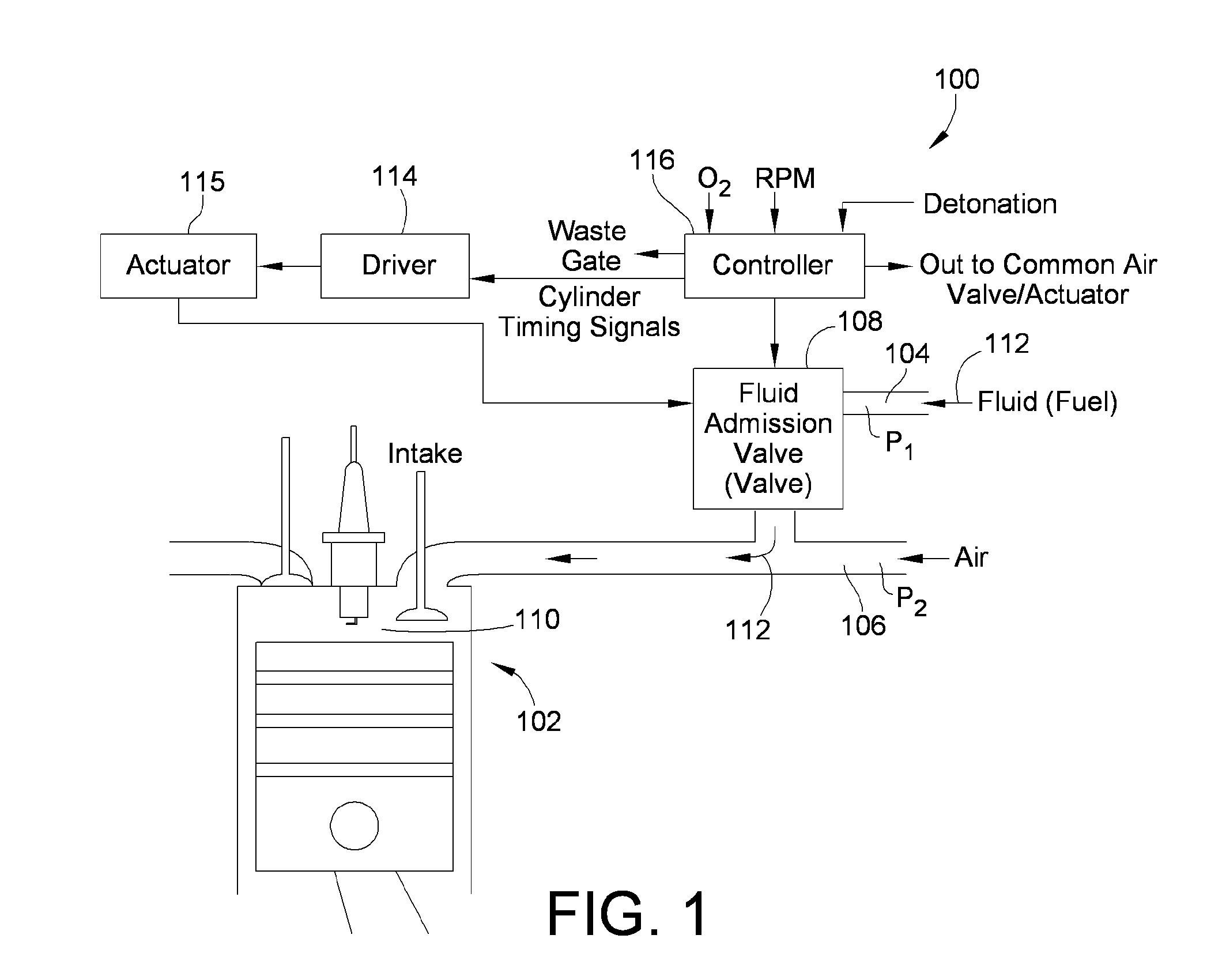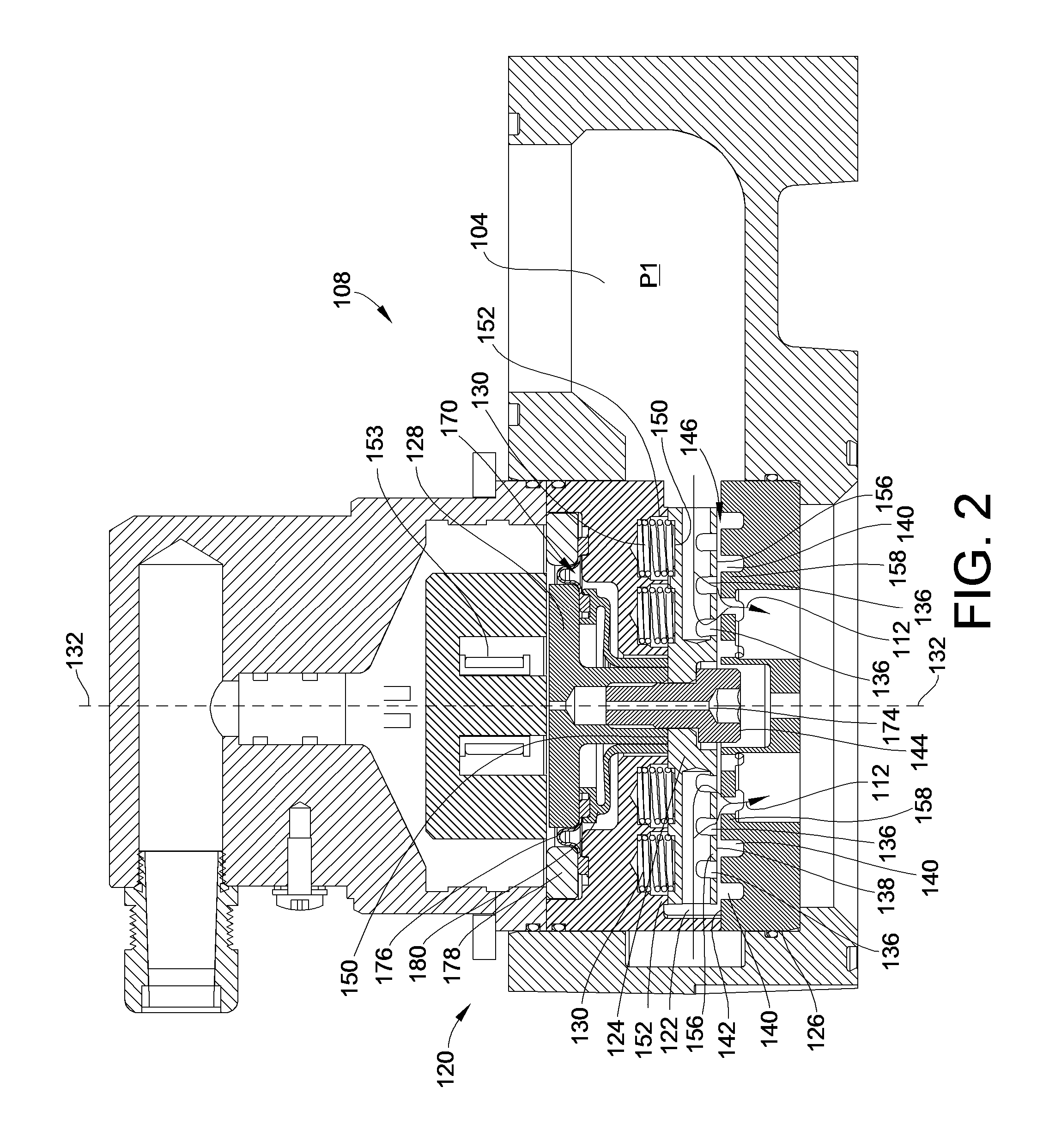Fluid admission system for providing a pressure-balanced valve
a technology of fluid admission system and valve body, which is applied in the direction of diaphragm valve, pressure relieving device on sealing face, application, etc., can solve the problems of electrically actuated valves typically not being used with large engines, high pressure and flow rate of fuel admission systems used with large internal combustion engines, and high flow rate of fluid admission systems. , to achieve the effect of eliminating valve lock-up
- Summary
- Abstract
- Description
- Claims
- Application Information
AI Technical Summary
Benefits of technology
Problems solved by technology
Method used
Image
Examples
Embodiment Construction
[0035]Referring to FIG. 1, an embodiment of a fluid admission system 100 for use with an internal combustion engine 102 is shown. The engine 102 may be a multiple cylinder, large bore engine capable of generating extremely high power for use in industrial applications. Although the fluid admission system 100 is shown associated with an internal combustion engine 102 in FIG. 1, it is to be understood that the fluid admission system 100 is not specific to a particular type of engine configuration or application. For example, the fluid admission system 100 may be used with a reciprocating air and gas compressor, a continuous combustion engine (e.g., a turbine engine), a compression ignition engine, and the like.
[0036]As illustrated, the fluid admission system 100 includes a fluid supply manifold 104, an air intake manifold 106, a fluid admission valve 108 located between the fluid supply manifold 104 and the air intake manifold 106, and a combustion cylinder 110. When the fluid admissi...
PUM
 Login to View More
Login to View More Abstract
Description
Claims
Application Information
 Login to View More
Login to View More - R&D
- Intellectual Property
- Life Sciences
- Materials
- Tech Scout
- Unparalleled Data Quality
- Higher Quality Content
- 60% Fewer Hallucinations
Browse by: Latest US Patents, China's latest patents, Technical Efficacy Thesaurus, Application Domain, Technology Topic, Popular Technical Reports.
© 2025 PatSnap. All rights reserved.Legal|Privacy policy|Modern Slavery Act Transparency Statement|Sitemap|About US| Contact US: help@patsnap.com



